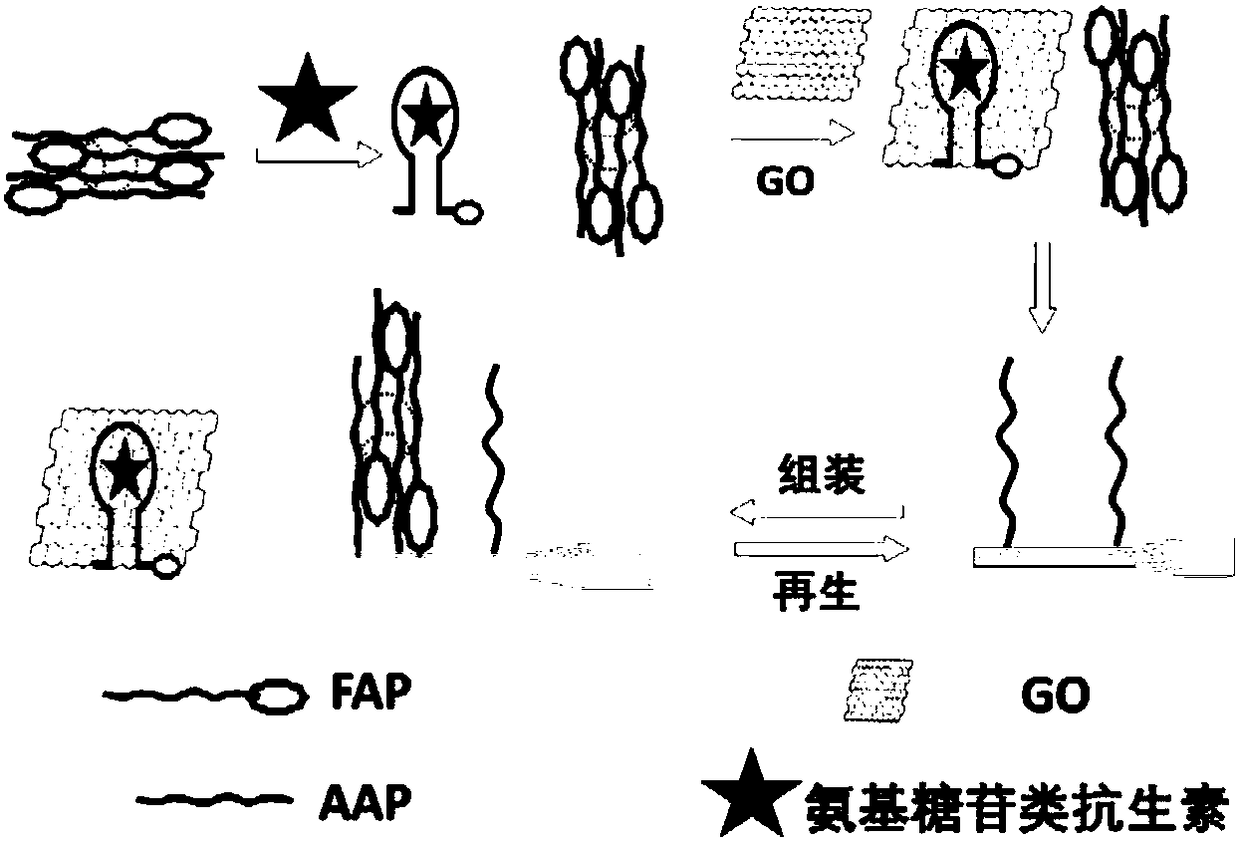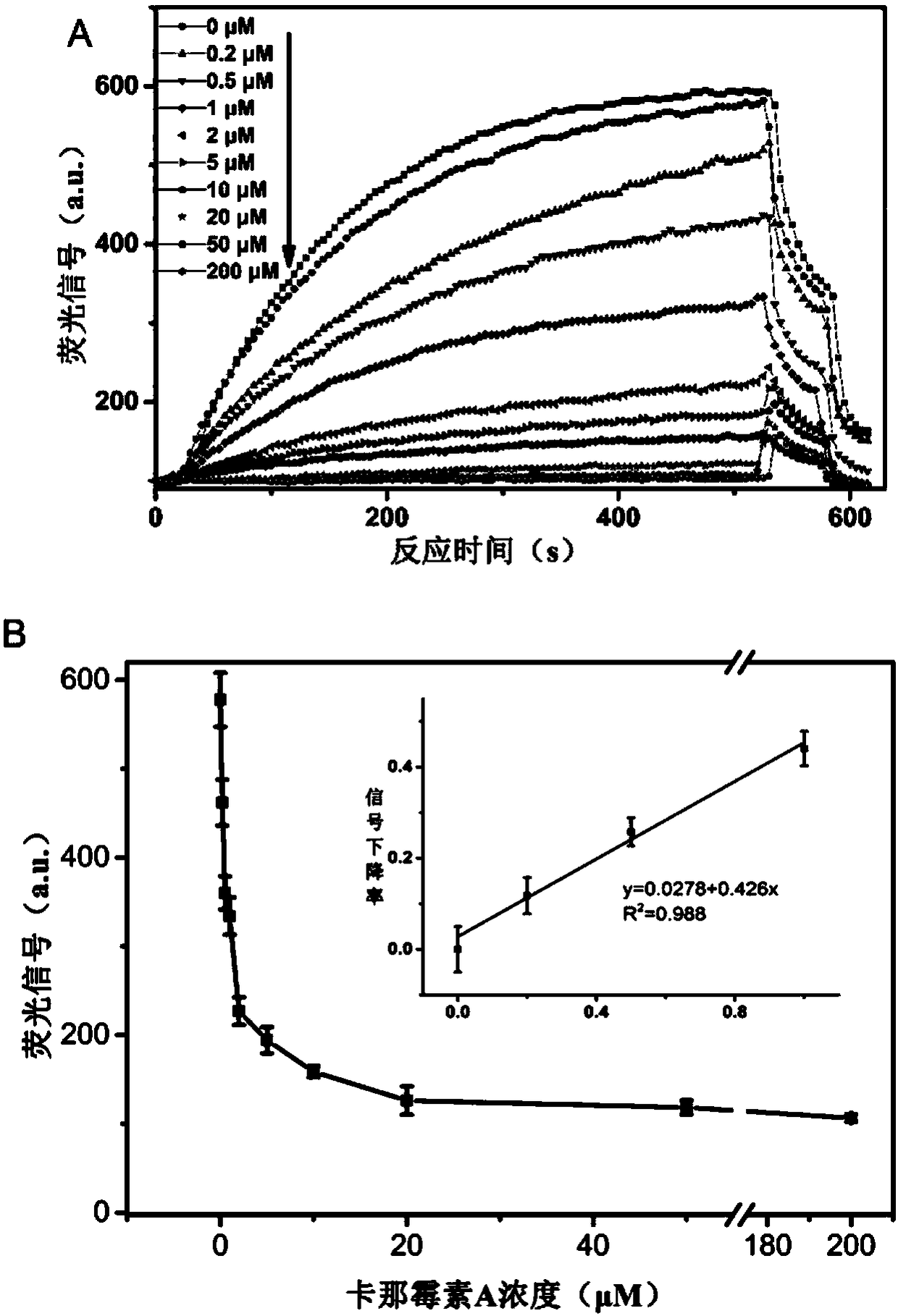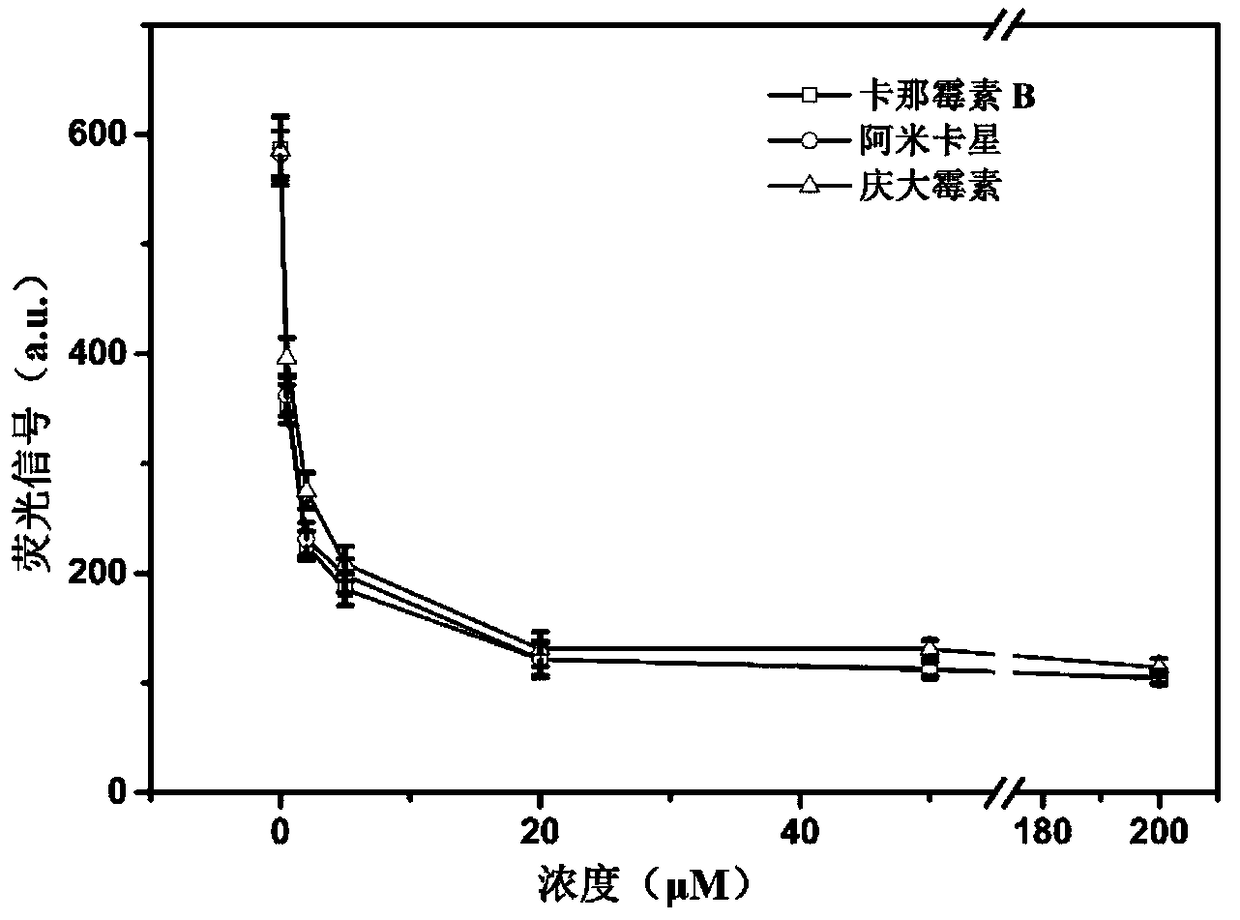Method for detecting content of aminoglycoside antibiotics in solution to be detected
A technology of aminoglycosides and antibiotics, applied in measuring devices, instruments, fluorescence/phosphorescence, etc., can solve the problems of continuous on-line detection of targets, no quantitative response, poor interface regeneration performance, etc., and achieve fast and low cost. , the effect of stable performance
- Summary
- Abstract
- Description
- Claims
- Application Information
AI Technical Summary
Problems solved by technology
Method used
Image
Examples
Embodiment 1
[0063] Embodiment 1, the method for detecting the content of aminoglycoside antibiotics in the solution to be tested
[0064] The inventor of the present invention has found a method for detecting the content of aminoglycoside antibiotics in the solution to be tested through a large number of experiments. The specific principle diagram is shown in figure 1 : When aminoglycoside antibiotics do not exist, FAP is easy to form nucleic acid aptamer intermolecular multimer structure (ie M-Apts); when aminoglycoside antibiotics exist, aminoglycoside antibiotics can specifically bind to FAP and destroy polymer structure and form a single-chain hairpin structure with fluorescence quenching effect; graphene oxide (GO) can selectively adsorb and quench the single-chain hairpin structure in solution, which further enhances the effect on the single-chain hairpin structure The quenching efficiency is beneficial to increase the sensitivity of the all-fiber evanescent wave biosensor. Without...
Embodiment 2
[0143] Embodiment 2, selective detection
[0144] 1. Preparation of AAP probe modified optical fiber
[0145] Same as Step 1 in Step A of Example 1.
[0146] 2. Selective detection of different antibiotics
[0147] Set up the experimental group and conduct three repeated experiments, and the steps of each repeated experiment are as follows:
[0148] 1. Acquisition of nucleic acid aptamer multimer structure (M-Apts)
[0149] Same as 1 in Step A, Step 2 of Example 1.
[0150] 2. Combine M-Apts with samples
[0151] (1) Get the antibiotic to be tested (kanamycin A, amikacin, tetracycline, streptomycin, chloramphenicol or sulfamethazine), and then use pH7.4, 10mM Tris-HAc buffer dilution, A solution of the antibiotic to be tested with a concentration of 400 μM was obtained.
[0152] (2) Take the M-Apts formed in step 1 and dilute it with a pH 7.4, 10 mM Tris-HAc buffer to obtain an M-Apts solution with a concentration of 40 nM.
[0153] (3) Take a centrifuge tube, add 500 μ...
Embodiment 3
[0161] Embodiment 3, repeatability detection
[0162] 1. Preparation of AAP probe modified optical fiber
[0163] Same as Step 1 in Step A of Example 1.
[0164] 2. Repeatability detection
[0165] 1. Acquisition of nucleic acid aptamer multimer structure (M-Apts)
[0166] (1) Take pH 7.4, 10mM Tris-HAc buffer containing 1μM FAP, bathe in water at 95°C for 10min (for denaturation), then immediately transfer to ice bath at 0°C for 15min (for the purpose of combining FAP molecules with each other) ), get M-Apts.
[0167] (2) Take the M-Apts formed in step 1 and dilute it with a pH 7.4, 10 mM Tris-HAc buffer to obtain a 20 nM M-Apts solution.
[0168] 2. Signal detection
[0169] (1) Install the AAP probe-modified optical fiber prepared in step 1 into the all-fiber evanescent wave biosensor.
[0170] (2) Take the M-Apts solution and pass it into the all-fiber evanescent wave biosensor that completed the step (1), and detect the fluorescence signal at 500 s.
[0171] (3) Af...
PUM
 Login to View More
Login to View More Abstract
Description
Claims
Application Information
 Login to View More
Login to View More - R&D
- Intellectual Property
- Life Sciences
- Materials
- Tech Scout
- Unparalleled Data Quality
- Higher Quality Content
- 60% Fewer Hallucinations
Browse by: Latest US Patents, China's latest patents, Technical Efficacy Thesaurus, Application Domain, Technology Topic, Popular Technical Reports.
© 2025 PatSnap. All rights reserved.Legal|Privacy policy|Modern Slavery Act Transparency Statement|Sitemap|About US| Contact US: help@patsnap.com



